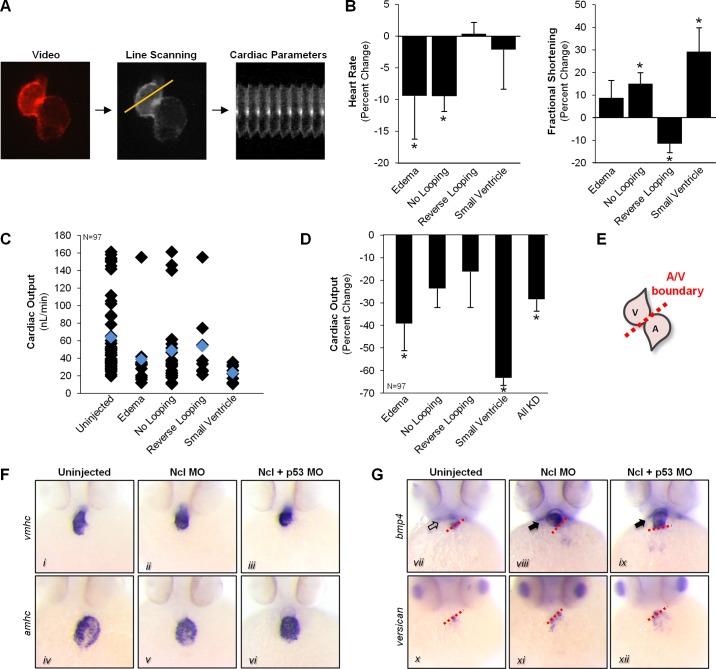Fig. 5.
Nucleolin is essential for proper cardiac function and myocyte differentiation. A: embryos were injected with Nucleolin MO and real-time movies of heart muscle recorded at 48 hpf via fluorescence video illumination of the cardiac-specific mCherry fluorescent protein. Line scanning software was used to analyze videos of beating hearts to calculate heart rate and fractional shortening in Nucleolin knockdown embryos (see methods and Ref. 29). B: animals with pericardial edema or no heart looping displayed decreased heart rate, while significant changes in fractional shortening were observed in no looping, reverse looping, and small ventricle fish. C: to assess whether changes in fractional shortening were compensated by inverse changes in heart rate, we calculated the cardiac output for each fish (left panel, black diamond indicates individual fish, blue indicates group average) and the percent change in the cardiac output compared uninjected controls (D). E: in situ hybridization was performed in 48 hpf embryos in the presence or absence of Nucleolin MO to examine markers of chamber specification and myocyte differentiation; schematic illustrates normal zebrafish heart chambers at 48 hpf. A, atrium; V, ventricle. F: endogenous expression and distribution of atrial (amhc; top panels) and ventricular (vmhc, bottom panels) specific myosin heavy chain were normal in Nucleolin KD embryos. G: however, staining for bmp4 (top panels), a myocardial lineage marker normally restricted to the AV boundary (red dashed line), displayed intense expression throughout the ventricle of hearts lacking nucleolin, while A/V boundary expression of versican (bottom panels), which is an endocardial marker, appeared normal. The expression of bmp4 in the ventricle at this late stage suggests that loss of Nucleolin perturbs bmp4 expression leading to a delay in myocyte differentiation and provides a mechanistic explanation for the defects in chamber morphology and patterning, given BMP4's role in regulating muscle development and cardiac left-right asymmetry.

